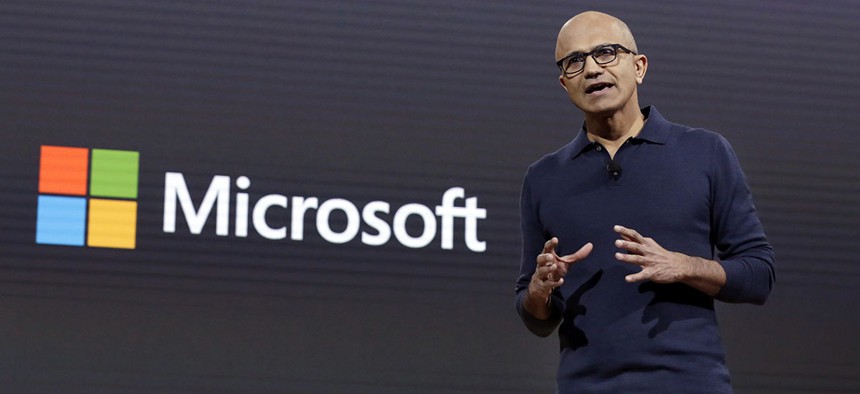Newest Version of Windows Won’t Let You Change Default Web Browser or Search Engine

Microsoft CEO Satya Nadella Richard Drew/AP
Microsoft says this is all for the sake of security.
On Windows 10 S, the new operating system Microsoft unveiled this week, users will not be able to change the default web browser to something other than Microsoft Edge, or the default search engine to anything but Bing. They will also not be able to download alternative browsers like Google Chrome or Mozilla Firefox, because Windows 10 S will only install apps included in the Windows Store. Google and Mozilla have not yet made their browsers available there.
Microsoft says this is all for the sake of security, and users who don’t like it can install Windows 10 Pro instead, which is free for students and teachers, and $49 for everyone else. A Microsoft spokesperson also said it’s up to browser vendors, not Microsoft, to make their apps available in the Windows Store.
“Currently, Chrome is not a verified app in the Windows Store, but we welcome Google to join us and submit it,” the spokesperson said.
Whatever the reason, Microsoft has a checkered history with such restrictions. In 2013, it was fined $731 million by the European Union for forcing Internet Explorer on its users, and in 1998 was sued by the United States Department of Justice, which alleged the software company had broken antitrust laws by bundling the browser with Windows.
Of course, the digital world is a very different place today than it was in 1998, and it’s become common for companies to create walled-garden environments. The iPhone doesn’t let you change its default browser to something other than Safari, and on Google’s Chromebook laptops, the operating system literally is the Chrome web browser.
Another big difference is that while Internet Explorer was by far the dominant browser in 1998, Microsoft Edge does not exactly share that advantage today. It’s currently hovering just under 5% of the market share, while Chrome is around 75 percent.
Windows 10 S is the operating system that comes with Microsoft’s new flagship Surface laptop, which was just introduced with a price tag of $999. But consumers who’ve grown used to having the freedom to download and install any software they want, unless they’re students or teachers, should probably be prepared to pay an extra $49.



